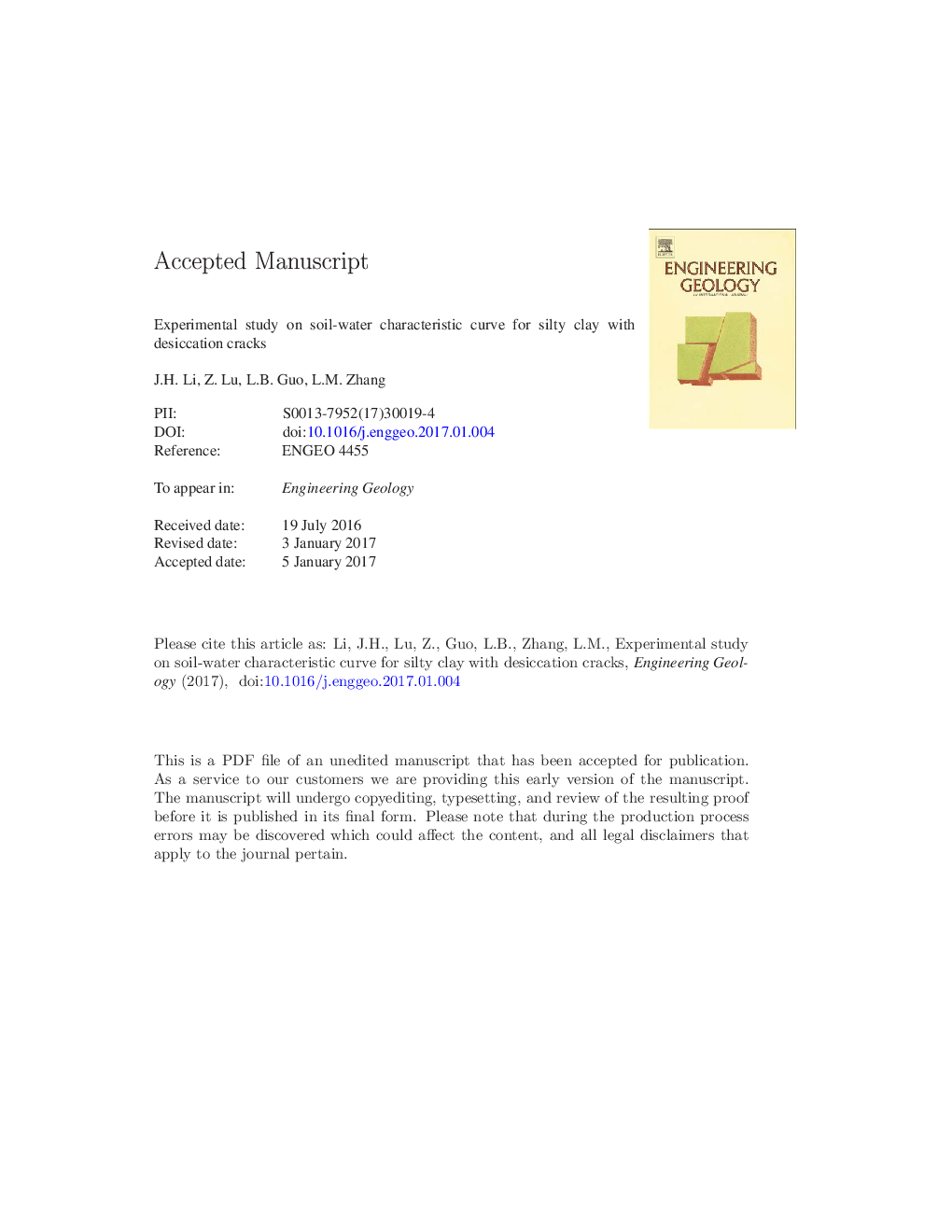| Article ID | Journal | Published Year | Pages | File Type |
|---|---|---|---|---|
| 5787709 | Engineering Geology | 2017 | 34 Pages |
Abstract
Cracks are ubiquitous in soils and can provide preferential pathways for rainfall infiltration and contaminant transport. The soil-water characteristic curve (SWCC) for a cracked soil is required when conducting seepage analysis. However, measuring SWCCs for cracked soils is difficult due to two reasons: (1) The presence of cracks leads to a significant change in the water content at extremely low suctions that cannot be controlled accurately; (2) The full development of cracks generally requires a large apparatus to accommodate the representative elementary volume of a crack network. This study aims to develop an experimental method to measure the SWCC for a silty clay with desiccation cracks. A large apparatus, 350Â mm in diameter and 280Â mm in height, was developed, which is capable of controlling extremely low suctions (<Â 0.01Â kPa) at an accuracy of 0.005Â kPa and accommodating a clay sample with fully developed crack networks. The crack development in the soil sample was observed, providing necessary parameters for the prediction of SWCCs based on a theoretical model for cracked soils. The drying and wetting SWCCs for a silty clay with desiccation cracks were measured in the suction range from 0.01Â kPa to 300Â kPa, and compared with the SWCCs predicted using the theoretical model.
Related Topics
Physical Sciences and Engineering
Earth and Planetary Sciences
Geotechnical Engineering and Engineering Geology
Authors
J.H. Li, Z. Lu, L.B. Guo, L.M. Zhang,
